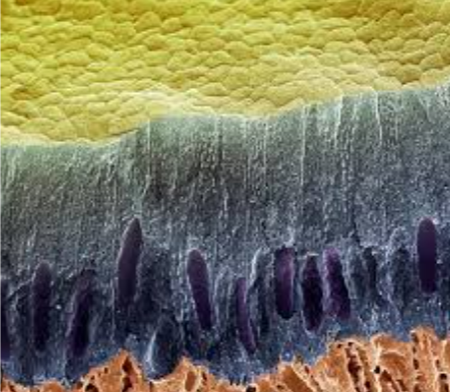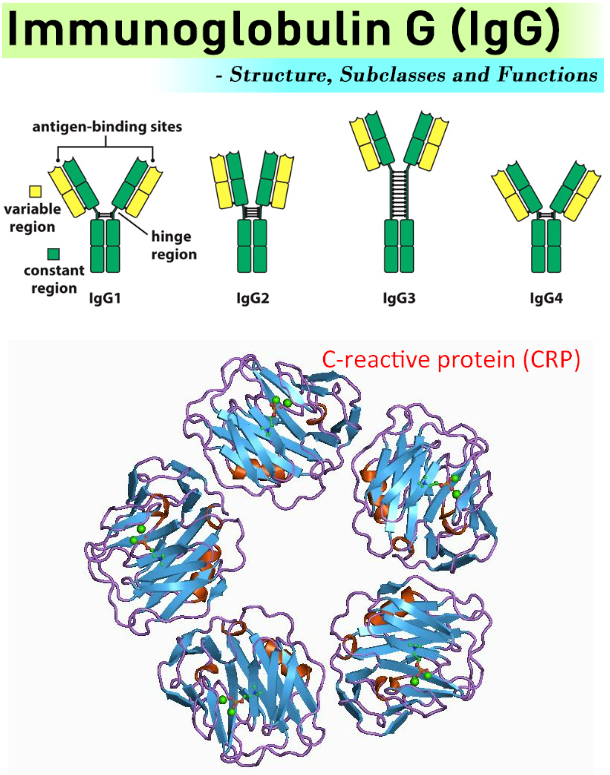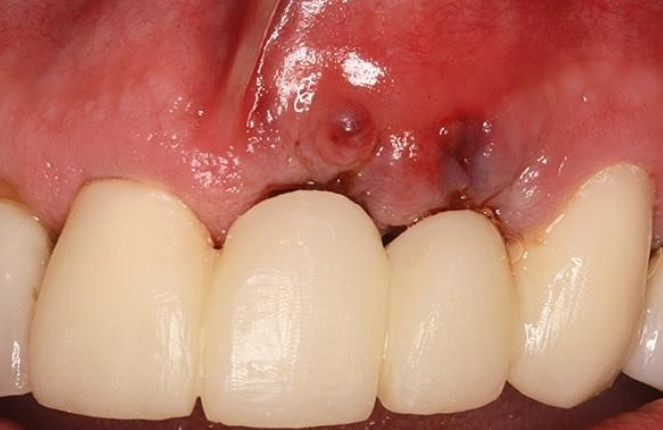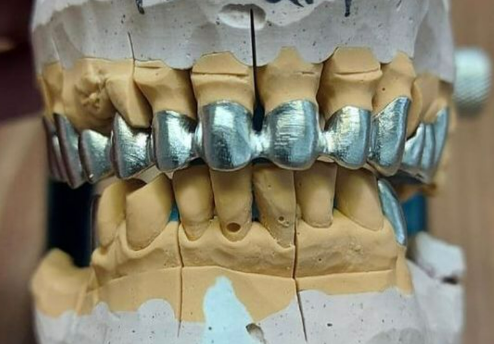How certain proteins in tooth enamel affect the body’s health: results of a new study
Introduction: A New Approach to Studying Human Health
Tooth enamel has long been recognized for its durability and role in dental health, but recent studies have revealed that it may hold the key to understanding broader human health trends, from ancient populations to modern societies. Innovative research on immune proteins from the University of Alaska Fairbanks that are embedded in tooth enamel is opening new doors to study immune responses, stress levels and disease patterns of past human populations This cutting-edge method offers a more nuanced view of health and wellness than traditional skeletal analysis, providing scientists with an unparalleled historical record.
The Role of Immune Proteins in Tooth Enamel
Tooth enamel, the hardest tissue in the human body, not only protects teeth from decay but also preserves a snapshot of immune responses during a person’s development. Specifically, two immune proteins have been discovered within tooth enamel: Immunoglobulin G (IgG) and C-reactive protein (CRP). IgG is an antibody that plays a critical role in fighting infections, while CRP is a protein produced in response to inflammation and stress. Both proteins are invaluable markers for understanding the health conditions of individuals during their formative years.
Unlike bone, which is susceptible to environmental changes over time, tooth enamel is highly resistant to degradation. This allows for the preservation of these proteins over centuries, providing researchers with a window into the immune system of ancient populations.
Methodology: Examining Immune Proteins Across Populations
The breakthrough method used to analyze these proteins involves extracting and measuring their concentrations in enamel samples from various populations, both ancient and modern. In one study, researchers analyzed teeth from three distinct groups:
- Ancestral Ohlone People: Native to California’s San Francisco Bay Area, these individuals lived through extreme stress, introduced diseases, and cultural upheavals during European colonization.
..
- European Settlers of the 1800s: Though living with fewer modern medical advantages, these settlers faced less stress than their Indigenous counterparts.
- Modern-Day Military Cadets: Representing contemporary humans with access to modern healthcare and nutrition, these cadets served as a baseline for comparison.
The results revealed a striking correlation between historical stress and disease exposure and the levels of IgG and CRP in tooth enamel. The Ohlone, who faced extraordinary adversity, displayed significantly higher protein levels, particularly in children who endured high mortality rates and disease.
Implications for Modern Health Studies
This novel method is not only useful for studying ancient populations but also has the potential to inform modern healthcare. By comparing the immune responses of past populations to those of modern humans, we can better understand how lifestyle, nutrition, and stress have evolved.
For instance, the comparison between military cadets and historical groups highlights how modern healthcare and improved living conditions have reduced stress-related immune responses. This comparative data can be used to track the long-term effects of stress and disease on human populations, offering valuable insights for public health.
Long-Term Preservation of Immune Proteins in Enamel
One of the most remarkable aspects of this research is the durability of tooth enamel. Unlike other tissues, which degrade over time, enamel preserves its structure for thousands of years. This makes it an ideal material for studying ancient health trends, as the immune proteins remain intact even in archaeological samples.
Scientists are particularly excited about the potential to study populations that have left behind little in terms of skeletal remains but whose teeth can offer a wealth of biological information. From prehistoric societies to modern communities, this approach promises to revolutionize our understanding of human health across millennia.
Future Applications of Immune Protein Analysis
As research into immune proteins in enamel continues to evolve, scientists anticipate a wide range of applications. This method could be used to:
- Track Disease Evolution: By studying historical populations, researchers can better understand how infectious diseases have evolved and spread over time.
- Assess the Impact of Climate and Environment: By analyzing stress markers in ancient teeth, scientists can correlate health outcomes with environmental changes such as famine, drought, or migration.
- Compare Past and Present Health Trends: The ability to compare immune responses across time allows researchers to explore how modern stressors, such as pollution or diet, impact human health compared to historical populations.
Conclusion: A New Frontier in Bioarchaeology
The discovery of immune proteins in tooth enamel is a game-changer for both archaeology and modern medicine. This innovative method provides an unprecedented view into the health and immune responses of ancient populations, offering a more detailed and accurate picture than traditional skeletal studies. By unlocking the secrets held within tooth enamel, scientists can gain valuable insights into human health across centuries, paving the way for new discoveries in both historical and contemporary populations.
Deep Dive: How Tooth Enamel Can Revolutionize Disease Tracking
One of the most promising aspects of analyzing immune proteins within tooth enamel is its potential to track the history and evolution of diseases in human populations. Understanding how different groups responded to infections, environmental stress, and malnutrition can provide a clear picture of the conditions that affected entire civilizations. This type of analysis could offer insights into:
- Pandemics of the Past: Historical pandemics like the Black Death, smallpox, or tuberculosis left devastating marks on global populations. The immune proteins within teeth from these periods could offer crucial data on how specific individuals or communities responded to these threats. For instance, high levels of CRP in populations during pandemic events could indicate widespread stress and inflammation associated with the outbreak.
- Immunity Evolution: Studying IgG concentrations across centuries could also reveal how human immune systems adapted to recurring diseases. This can help trace the origins of modern immunity and explain genetic predispositions to certain conditions in contemporary populations.
- Cultural and Nutritional Shifts: A society’s lifestyle, from agriculture to urbanization, impacts its disease profile. For example, pre-industrial societies might show higher stress markers in response to dietary deficiencies, while post-industrial populations could reveal different immune responses linked to pollution and processed diets.
Comparative Analysis: Modern vs. Historical Populations
As research into this technique advances, comparisons between modern and historical populations become particularly compelling. Differences in immune responses can highlight how technological, medical, and societal developments have reshaped human health.
1. Modern Healthcare Impact
- Present-day populations, especially in developed countries, benefit from vaccines, antibiotics, and advanced medical care that significantly reduce the prevalence and severity of infectious diseases. This could explain lower CRP and IgG levels in today’s military cadets, for example, compared to their historical counterparts.
- In contrast, populations from earlier centuries were frequently ravaged by infections and untreated injuries, which is likely reflected in their heightened protein levels. Analyzing teeth from these eras can offer direct evidence of how medical interventions—or the lack thereof—affected immune health.
2. Stress in Historical Context
- Psychological and Physical Stress: Stress isn’t just a modern phenomenon. Ancient populations experienced significant psychological trauma from warfare, forced migration, slavery, and disease outbreaks. The elevated CRP levels found in historical populations, such as the Ohlone people, can serve as a physiological testament to these hardships.
- Environmental Stresses: Harsh living conditions, malnutrition, and extreme weather could also be reflected in the immune markers preserved in enamel. For example, periods of famine or drought would likely elevate CRP due to systemic stress on the body.
3. Nutritional Advances
- Modern diets, while often criticized for processed foods and sugar, generally provide more consistent caloric intake and nutrient diversity. The difference in nutritional health across centuries can manifest in the levels of both CRP and IgG in populations. Comparing the enamel of modern individuals with those from past centuries can highlight how nutrient deficiencies may have impacted immune responses.
Ethical Considerations in Studying Ancient Populations
While the potential for groundbreaking discoveries in this field is immense, there are ethical concerns that must be navigated, particularly when studying Indigenous or marginalized groups. Collaboration with descendant communities is essential to ensure that such research is conducted respectfully and with full consent. The case of the Ohlone descendants, who granted permission for their ancestors’ remains to be studied, sets a positive precedent for future research.
Moreover, it is crucial to handle sensitive information about health, disease, and stress in ancient populations with care. Highlighting the hardships faced by these communities without reducing their identities to mere data points is a balance that must be maintained in scientific publications and public discourse.
Applications for Personalized Medicine and Genomic Research
Beyond archaeology, studying immune proteins in tooth enamel can have direct applications in the field of personalized medicine. Immune responses are deeply tied to genetics, and understanding how ancient populations reacted to disease can inform modern genetic research.
1. Genetic Predispositions
- By correlating protein levels in ancient teeth with modern genetic profiles, researchers can better understand genetic predispositions to certain diseases. For example, if ancient populations showed heightened immune responses to specific pathogens, it might explain why certain groups today are more resistant to or more susceptible to related diseases.
2. Tailored Healthcare Solutions
- As we gather more data on immune responses across different historical periods and geographical regions, personalized healthcare can evolve to take ancestry into account. For example, populations with genetic roots in regions that experienced historical pandemics may have unique immune markers that can influence how they respond to modern medical treatments.
Conclusion: A Future Built on the Past
The study of immune proteins embedded in tooth enamel is poised to revolutionize how we understand both ancient and modern human health. From uncovering the toll of pandemics and stress on historical populations to informing personalized medicine and disease tracking today, this method opens up countless possibilities. As bioarchaeology and medical research continue to converge, tooth enamel analysis may provide the key to unlocking long-lost answers about the health of entire civilizations.
Sources
- ScienceDaily – Proteins in tooth enamel offer window into human wellness – September 19, 2024
- ScienceDirect – Immune proteins recovered in tooth enamel as a biochemical record of health in past populations: Paleoproteomic analysis of Mission Period Native Californians – September 19, 2024











